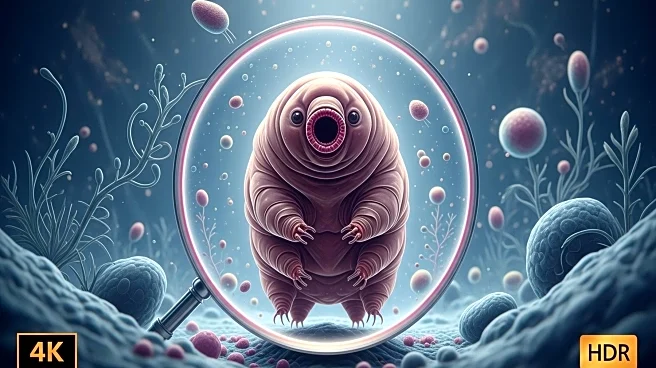What is the story about?
What's Happening?
Researchers have discovered that Paralvinella hessleri worms, found in hydrothermal vents in the Pacific Ocean, can transform toxic arsenic into a harmless yellow pigment. These worms thrive in extreme environments characterized by boiling water and toxic gases. The study, led by Dr. Hao Wang, reveals that the worms detoxify arsenic by combining it with sulfur, forming a non-toxic mineral. This adaptation allows them to survive in one of Earth's most hostile environments, providing insights into the resilience and adaptability of life.
Why It's Important?
The discovery of Paralvinella hessleri's detoxification mechanism has significant implications for environmental science and medicine. Understanding how these worms neutralize arsenic could lead to new methods for pollution mitigation and medical treatments. The study also highlights the potential for life to adapt to extreme conditions, raising questions about the limits of life on Earth and the possibility of similar organisms existing elsewhere in the universe. The research underscores the importance of exploring extreme environments to uncover novel biological processes.
What's Next?
Further research is needed to fully understand the molecular mechanisms behind the worms' detoxification process. Scientists are interested in exploring how these mechanisms can be applied to other organisms or human contexts, such as water filtration. The study opens up new avenues for research in environmental science and biotechnology, with potential applications in pollution control and sustainable resource management.
Beyond the Headlines
The discovery emphasizes the importance of studying extreme environments to gain insights into the resilience of life. It also highlights the potential for interdisciplinary research, combining biology, chemistry, and environmental science to address global challenges. The findings could inspire new approaches to managing environmental toxins and developing sustainable technologies.
AI Generated Content
Do you find this article useful?















